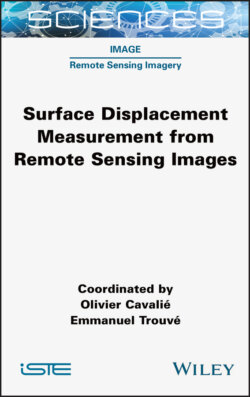Читать книгу Surface Displacement Measurement from Remote Sensing Images - Olivier Cavalie - Страница 29
1.3.3. NISAR
ОглавлениеThe NASA and Indian Space Research Organisation (ISRO) NISAR mission with both L-band and S-band wavelengths is dedicated to and optimized for studying hazards and global environmental change. NISAR, planned to be launched in 2022, will observe Earth’s land and ice-covered surfaces at 3–10 m resolution globally, with 12-day regularity on ascending and descending passes, sampling Earth on average every six days for a baseline three-year mission. As NISAR will be only left-looking, it will be a major asset for mapping Antarctica, while Sentinel-1, with a similar large mission coverage, is already undertaking right-looking operations.
NASA contributions include the L-band SAR instrument, with a 12 m diameter deployable mesh reflector, 9 m deployable boom and octagonal instrument structure. In addition, NASA will deploy a high-capacity solid-state recorder (approximately 9 Tbits at end of life), GPS, a 3.5 Gbps Ka-band telecom system and an engineering payload to coordinate command and data handling with the ISRO spacecraft control systems.
The ISRO will provide the spacecraft and launch vehicle, as well as the S-band SAR electronics to be mounted on the instrument structure. The coordination of technical interfaces among subsystems is a major focus area in the partnership. Orbit control within 350 m and a pointing control shorter than 273 arcseconds will enable good accuracy to follow deformation by InSAR.
Data access: As mentioned by NASA (2019), the science teams and algorithm development teams at NASA and the ISRO will work jointly to create a common set of product types and software. The project will deliver NISAR data to NASA and the ISRO for archiving and distribution. NASA and the ISRO have agreed to a free and open data policy for these data. All NISAR science data (L- and S-band) will be freely available and open to the public, consistent with the long-standing NASA Earth Science open data policy.
The target strategy assigns a single radar mode to a given area on Earth. Where target areas overlap, the modes are compatible so that no science discipline loses information. This set of global target types and associated radar modes will provide each of the individual disciplines with the data they need for their science. The observation plan calls for nearly continuous global coverage over land and ice. India has planned specific radar modes to fulfill ISRO’s science requirements for the mission. For the rest of the globe, the most inclusive radar mode was chosen where conflicting science discipline needs were identified.
